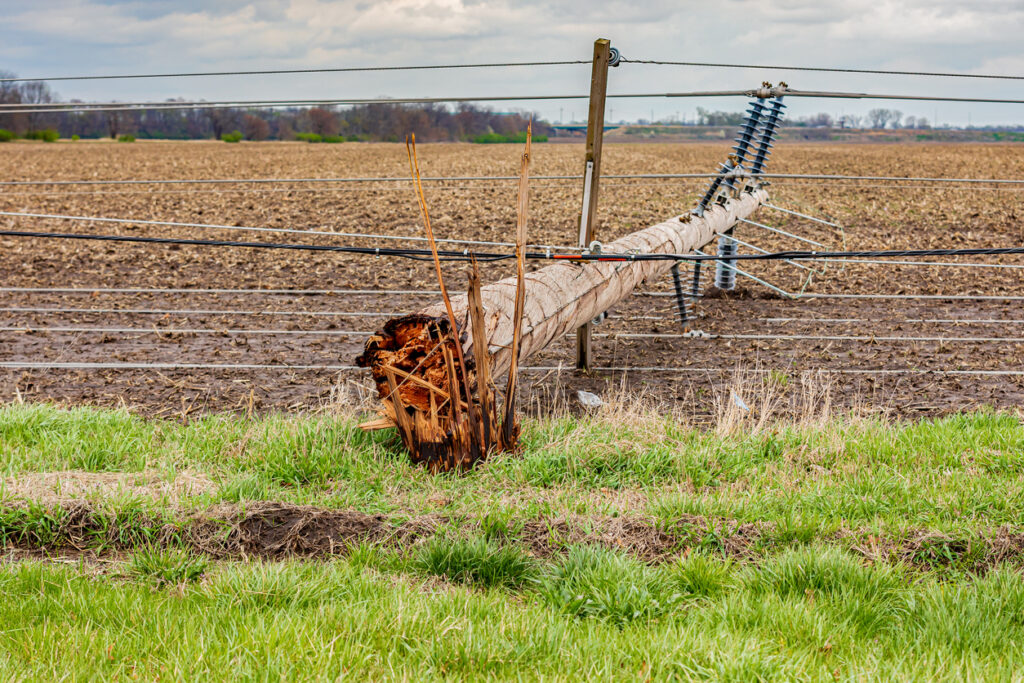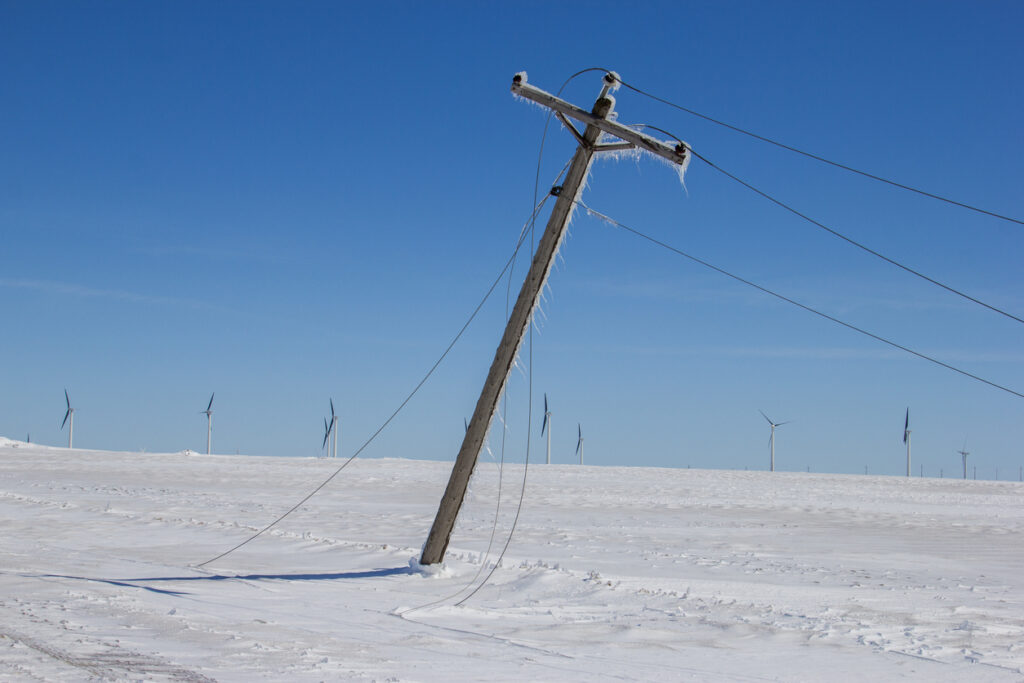The PoleOS™ Company
Why Poles Fail
Failure of a utility pole can be catastrophic. Besides cutting power to a potentially significant number of customers, the impact of a 500+ kilogram pole falling in some random direction can lead to significant damage, injuries, or even death. The impact of a single pole failure can have a disproportional impact on customers depending on the location of the pole. A pole in a hard-to-reach area, such as a steep slope in a wilderness setting, will take significantly more time to replace. Pole failures can damage or disrupt other infrastructure, such as when a pole lands on a highway, train track, or structures. Then of course, are the shock hazards created when energized equipment and conductors make contact with whatever happens to be unlucky enough to be underneath.
The reasons a pole can fail can be many and pole failure is often the combination of multiple factors. Some of these factors include neglect/oversight/abandonment, pole decay, alteration of the pole by third parties, natural events, interaction with vegetation, vehicle impacts, overload, improper use, alteration or removal of guy wires or their anchors, or improper pole setting, erosion, or other changes to the soil near the pole.

Some failure mechanisms of poles are difficult to detect and therefore more difficult to anticipate. For example, with pole decay, the deterioration of the pole is often hidden from sight, typically occurring at the ground line or below. In the case of wood utility poles, they can be treated with chemical preservatives to extend their life expectancy. However chemical preservatives degrade over time and utility poles must be regularly inspected and maintained. These treated poles will decay over time from moisture exposure that promotes wood fungal decay, reducing the structural capacity of the pole from being directly embedded in the ground.
To the public, a pole may appear to be simply stuck into the ground. In reality, the utility pole design and the engineering to site a pole are often complex. The depth to which a utility pole is embedded in the ground is typically dictated by the forces it must carry. Design variabilities such as regional weather conditions, soil composition, clearance requirements, and the spacing between poles all potentially affect the anticipated forces that each pole needs to support; each pole’s design parameters are unique.
As an example, in certain regions, utility poles must be designed to support ice or dust loads on the conductors. In both cases, moisture condenses on the conductor. Ice or dust accumulation creates an enlarged surface area, which increases wind resistance as the wind blows on that enlarged area of wire.

This additional resistance may lead to stresses the pole was never designed to withstand. The loads, naturally, will vary depending on the region, but the problem is more complex than simply the weight of the accumulating load. Forces are imposed near the top of the pole, and those forces must be safely transferred to the ground.
Clearance of the conductors with the ground, buildings, vehicles, and other wires defines the placement of the pole. The spacing between poles will affect a pole’s design; poles with differential wire sag on either side will experience unbalanced forces. If the forces are unbalanced, then those forces must be restrained at the ground. Guy wires may be used to stabilize poles when they are subjected to unequal forces. All of these factors need to be monitored and understood by the utility.
Utility poles don’t just carry conductors. Each utility probably has several different renters or tenants, each with a separate renter contract. It is the utility’s responsibility to keep track of what and how many attachments are on each utility pole so that no single pole gets overloaded. Overloading weakens the pole structurally and will eventually cause it to fail. Pole owners must also ensure that all pole attachments have proper permits and updated contractual paperwork. Sharing space on the pole with cable companies, and other entities is a fact of life. Each attachment reduces the integrity of poles as they require installing fasteners.
The hard truth is that the tenants on a pole do not always communicate with the utility when adding, changing, or removing attachments. This puts the utility into an awkward position having liability for any injury or damage due to a pole failure but not having complete control over what is happening on the pole. Part of a robust inspection and tracking program for the poles should infield inspection with seamless integration to back office systems.
John J. Simmins is Executive Direct of the NYS Center for Advanced Ceramic Technology (CACT) at Alfred University. In this position, he supports sponsored research for approximately 50 engineering faculty and 50 graduate students. Alfred provides undergraduate and graduate degrees in Renewable Energy Engineering, Mechanical Engineering, as well as Glass and Ceramic Engineering. Dr. Simmins spent ten years at EPRI as a Technical Executive before going to Alfred. At EPRI he studied the intersection of augmented reality, artificial intelligence, and geospatial information systems. He holds a B.S. and Ph.D. in Ceramic Engineering from Alfred University.
The latest from the IKE Wire
Video Chat: Challenges and Opportunities for Power Delivery Leaders (Part 2)
Overview Energy industry expert and author, Peter Kelly-Detwiler, Dennis Elsenbeck, h...
Read MoreIntroducing PolePilot™: Intelligent automation for utility pole analysis
Analyzing distribution pole imagery is traditionally a manual, time-consuming process...
Read MoreHow to streamline pole attachment processes to meet the FCC’s new rules
The Federal Communications Commission (FCC) recently issued new rules to speed up the...
Read MoreSubscribe to the IKE Wire
Get the latest insights on data acquisition and structural analysis from the ikeGPS experts.
